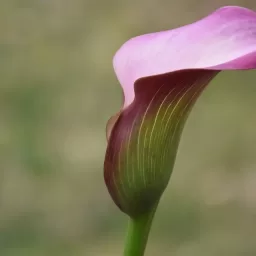In the beginning was the incandescent bulb and for well over a century this bulb has saved us from oil lamps and candle use for everyday lighting needs. But the incandescent is wasteful with energy and the times are changing.
For the last couple of decades the compact fluorescent light bulb (CFL) has been climbing the charts in terms of usability and energy efficiency. CFLs out perform traditional incandescent bulbs, but include the use of toxic mercury in their production.
The manufacture of CFLs was held back for many years due to the need for new manufacturing equipment. This problem also kept the prices high, about $30 for an average household bulb. After some large government orders, more money was put into new production machinery and slowly the prices came down to what they are today, around $5 for that same bulb.
CFLs would seem like an eco friendly choice for lighting and much of the big corporate advertising echoes that sentiment, but the inclusion of mercury will always be a problem. Should you ever break a CFL bulb, the clean up check list is comprehensive. The toxic mercury, although only a small amount is used (enough to cover the tip of a pen), can be quite a hazard to all living things.
A new generation of the light bulb is now coming to the forefront. Light emitting diodes (LED) are the new environmentally safe solution. White light LED bulbs are finally here after several years of suffering the same early fate of CFLs.
Now that the colouring of LEDs is on track these bulbs will soon be taking over from CFLs. A few obstacles LED bulbs have to overcome are their high price, now roughly what CFLs cost when they first came on to the market, about $30 for an average household bulb.
With increased desire from the public, LED prices will come down. On the plus side, white light LED bulbs offer better economy than CFLs. They last up to six times longer and use less wattage for the same level of light.
LED bulbs are solid state technology which means that they can be turned on and off millions of times during their 10+ year lifespan. And unlike CFLs, white light LED bulbs need no warm up time, instant on, instant off with an LED.
Most importantly, there is No mercury used in the production of LED bulbs so disposing of them when they finally do wear out is a much simpler task, unlike CFL bulbs. As the LED market grows there will be more variations on bulb types and styles and even lower prices. White light LED bulbs are here to stay, but still face a battle.
Due to the considerable investment in production equipment by lighting giants like GE, LEDs have a tougher road ahead of them. Because of millions spent on production and stock of CFLs, you won’t see GE jumping to LEDs right away. But large corporations like McDonalds, Macys, Kohls and Coca Cola to name just a few do see the benefits and have already committed to switching over to LEDs.
Even with the current price of white light LED bulbs, the relative cost is still very low if you factor in the lifespan and energy saving during that time. Add to this the lack of any toxic chemicals and the LED bulb is most certainly the bulb of the future.
AUTOPOST by BEDEWY VISIT GAHZLY





